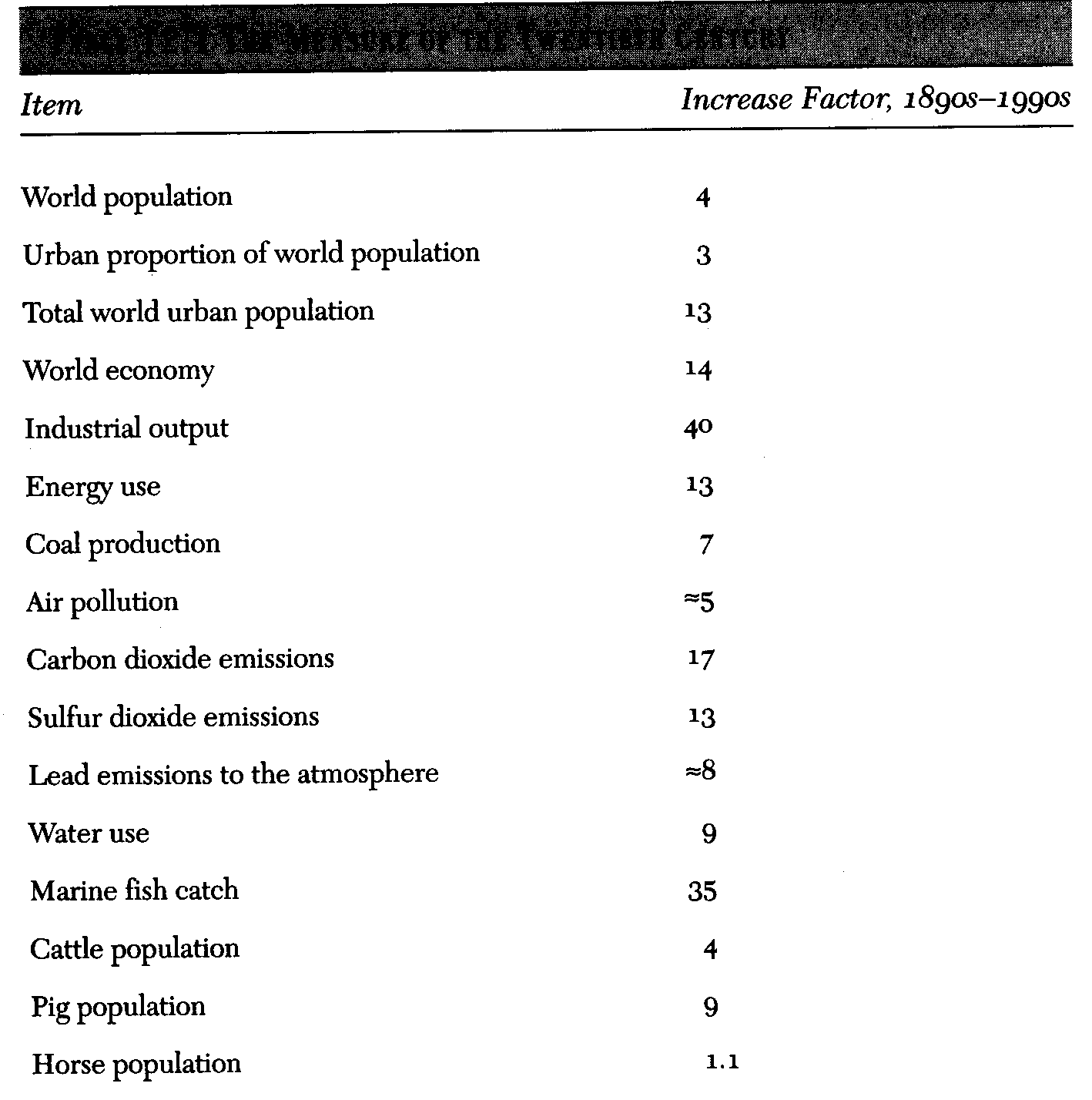|
Material Throughput
 Thinking about sustainable ecologcial scale involves thinking about the amount of physical material moving through the global economy. This notion of Material Throughput helps us connect the physical size of the global economy and the ecosystems it affects.1 Each time we purchase a good or service we set in motion a chain of activities that has an impact on the physical world. Whether it is extracting resources from the earth, manipulating those resources in a production process, using the goods produced, or the eventual disposal of those goods as waste, physical material is being used and used up, energy is being expended and dissipated, and ecosystems are being degraded. There is little recognition that economic activity is impossible without some physical impact. Sustainable scale raises the question as to how much material throughput is possible while sustaining the ecosystem services that make economic and other important human activities possible. Thinking about sustainable ecologcial scale involves thinking about the amount of physical material moving through the global economy. This notion of Material Throughput helps us connect the physical size of the global economy and the ecosystems it affects.1 Each time we purchase a good or service we set in motion a chain of activities that has an impact on the physical world. Whether it is extracting resources from the earth, manipulating those resources in a production process, using the goods produced, or the eventual disposal of those goods as waste, physical material is being used and used up, energy is being expended and dissipated, and ecosystems are being degraded. There is little recognition that economic activity is impossible without some physical impact. Sustainable scale raises the question as to how much material throughput is possible while sustaining the ecosystem services that make economic and other important human activities possible.
The primary measure of economic activity, Gross World Product (GWP), is also a general measure of material throughput (see Material Flow Analysis). The higher the GWP, the more material and energy use. This is true whether GWP is measuring steel production, information technologies or currency speculation. All economic activities require material throughput to a greater or lesser degree. An expanding global population, and growing levels of consumption (see The IPAT Equation), mean that the total amount of material throughput continues to increase, despite increased efficiencies in some areas. Economic activity and material throughput are inextricably linked, and one may serve as a rough proxy for the other.
|